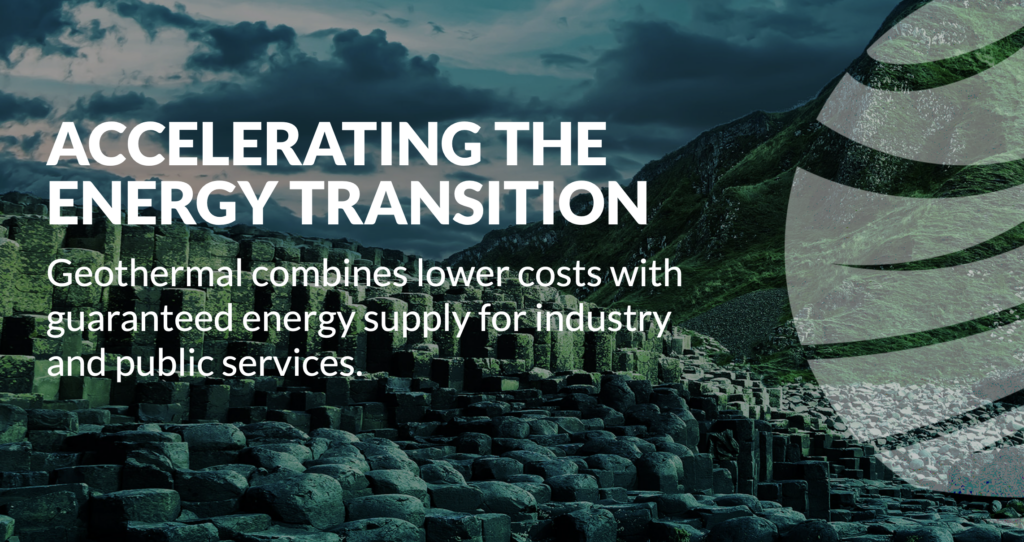Geothermal to Accelerate the Decarbonisation of UK Heat
The decarbonisation of Heat is a major challenge for the UK. It represents approximately 50% of our energy use, ranking ahead of Transport and Power.

The decarbonisation of Heat is a major challenge for the UK. It represents approximately 50% of our energy use, ranking ahead of Transport and Power.
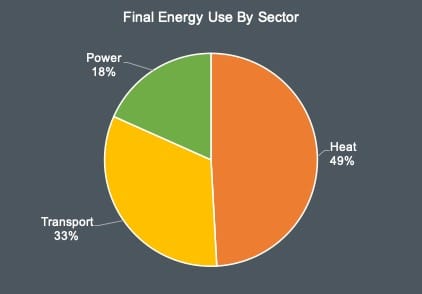
We frequently see and hear discussions in the media about the decarbonisation of Power via renewable energy and the challenges of grid capacity and grid upgrades. Progress on Transport is a constant theme of discussion in the public eye regarding EV adoption.
Despite its size and relevance, it feels like Heat is being left behind in the conversation. Our overreliance on Gas for Heat is a major obstacle on our pathway to meet our decarbonisation goals.
UK is dominated by fossil fuel gas – with 85% or about 24.5 million homes heated by natural gas - Energy Systems Catapult
It also leaves the UK open to geopolitical and global market supply chain volatility, e.g. the Russia - Ukraine scenario.
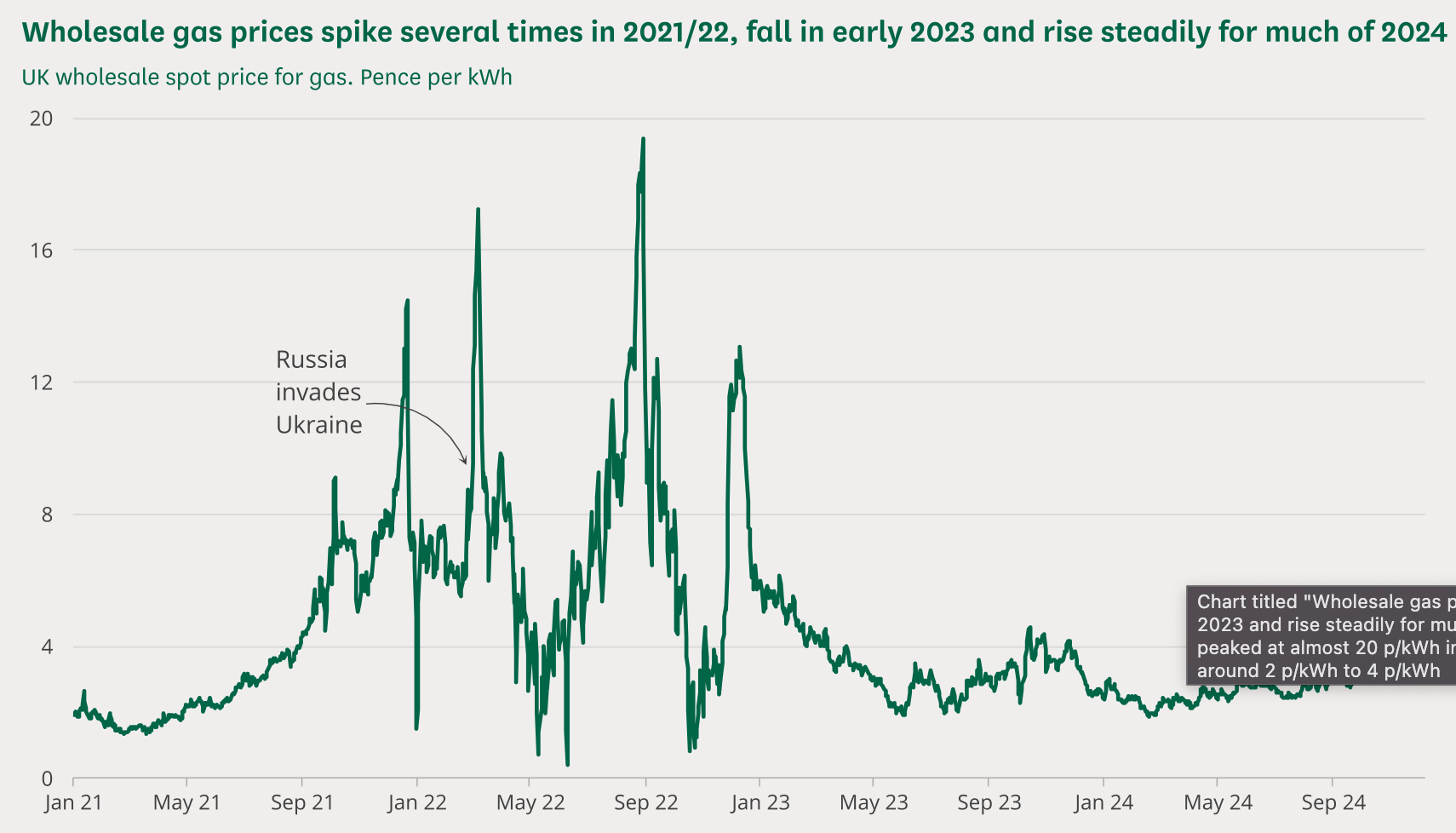
Decarbonising Heat Challenges
Is decarbonising Heat too hard to achieve or too challenging for current technologies?
Or is our national strategy missing a key solution pathway?
Let's explore the UK data on energy consumption for heating.
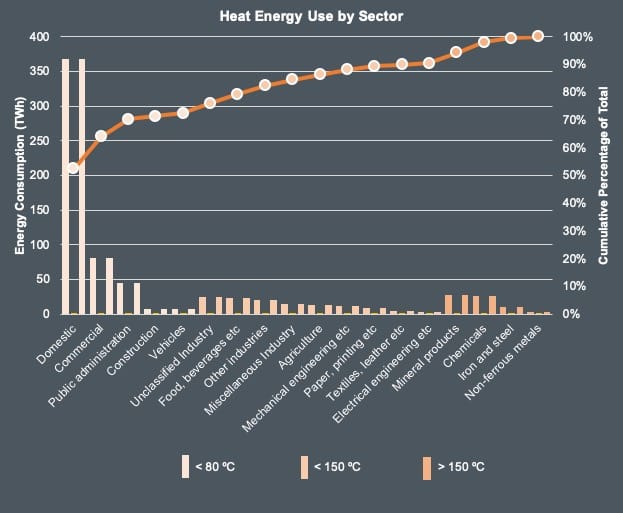
Figure 2 uses the Digest of UK Energy Statistics (DUKES) data that provides a breakdown of energy use by type categorised in three temperature ranges. Combustion fuels (oil, gas and coal) are assumed to be utilised in heating applications.
Typical use cases for the nominal temperature ranges:
Low ♨️
< 80 ºC - typical applications include space heating/cooling and domestic hot water, plus some lower temperature process heat
Medium ♨️ ♨️
< 150 ºC - similar applications to Low, plus additional use of process heat >90 ºC, typically via steam. Although 120 - 150 ºC has significant application, it is the minority of energy use in the grouped sectors of this category
High ♨️ ♨️ ♨️
> 150 ºC - These sectors typically have heat demands of several hundred degrees for chemical and process engineering in mineral, cement, metals and oil & gas refining
The key takeaways:
▶️ Domestic heat dominates use, just >50%, typically 60 ºC or less
▶️ Up to 90% of the UK’s heat demand is less than 150 ºC
▶️ Majority of industrial use is at Medium heat
✅ The majority of heat use is within the output capabilities of heat pumps
Typical industrial use of heat in the majority of applications, is at a substantially lower temperature than the requirements of high-temperature processes [e.g. chemicals, cement and metals]. But those higher temperature facilities are also typically the highest loads - measured in 10s MWth.
The UK’s commercial and industrial sector uses a lot of heat energy. Fortunately, the majority of it is within our capability to decarbonise more easily than we might have originally anticipated.
The benefit to our strategy is twofold;
1️⃣ Rapid electrification of low heat load with heat pumps
2️⃣ Defines focus areas for high-temperature renewable heat, from biomass, biofuels and green hydrogen, for hard-to-abate sectors.
Geothermal Solutions
As additional reading to this article, those looking for a refresher or deeper analysis of geothermal energy system archetypes can explore further scope via the link below.
⚙️ Shallow Geothermal - Open & Closed Loop, and Minewater
⚙️ Deep Geothermal Heating - Direct Use Heat and Closed Loop
⚙️ Deep Geothermal Power - Engineered and Enhanced Geothermal Systems
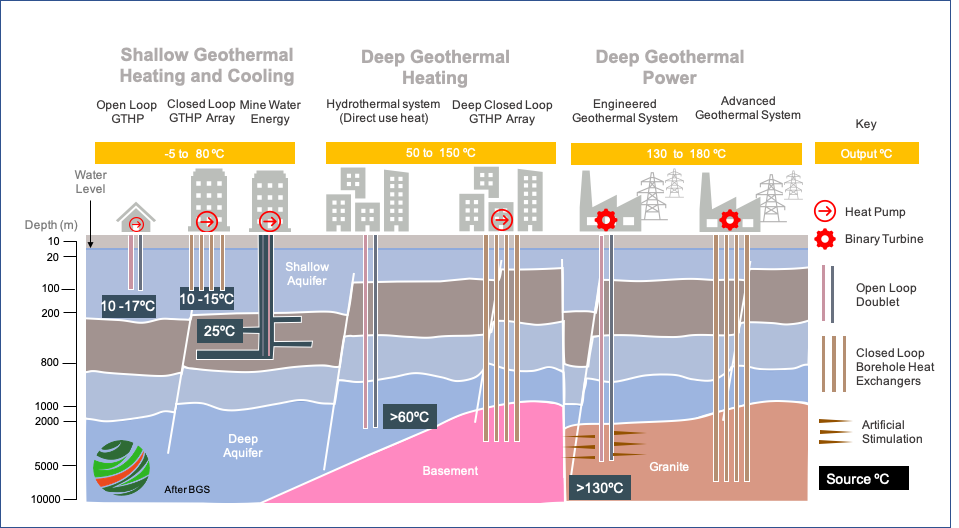
Geothermal System Archetypes Article
Geothermal Heat Pumps
Conventional domestic geothermal (or “ground source”) heat pumps (~10 KWth in capacity) can deliver both space heating and domestic hot water at 60 ºC.
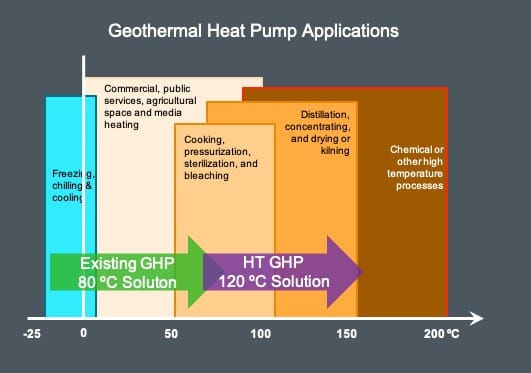
On this basis, more than 70% of the heating in the UK could be delivered by this proven technology at high heat pump efficiencies (known as the Coefficient of Performance, COP) of 3 or more.
Therefore, these applications can and are extended to larger thermal output capacities (100s KWth to greater than 1MW in larger heat networks).
This is common practice in Europe and the USA; there are now more than 24 million heat pumps in Europe [>2023 data] mixed across Air Source and Ground Source types, according to the European Heat Pump Association.
There are now 23.96 million heat pumps installed in Europe’s buildings – a 13.7% rise on 2022’s total.
Geothermal Heat Pumps create wider benefits and opportunities by accelerating the deployment and conversion of multiple domestic property connections to networked ground source arrays, reducing infrastructure time and cost.
Similarly, larger-scale district heat networks in urban zones offer heating and cooling capability. According to this 2023 report, there are around 17,000 district heat network systems in Europe, delivering 30GWth to approximately 70 million connected citizens.
These are supplied by a mix of energy sources, approximately 43% renewable in Europe - Geothermal Heat Pumps therefore have a potential role to play in decarbonising existing, alongside new infrastructure.
Barriers to UK Deployment and Scaling
What's holding us back in the UK? We have proven low-temperature low/zero carbon solutions to decarbonise heat - why isn't our delivery rolling out quicker?
High-level key factors holding back deployment at scale include:
⚫ Fossil fuel prices
⚡Electricity cost structure
❎ Lack of climate ambition
📉 High upfront capital costs
💡Lack of awareness of the technology and applications
Engagement and education are key with both consumers and policymakers, although increasing interest and support is seen at committee level and from individual politicians in government.
Low carbon, low-cost heat can be a key lever of a 'just transition' to reduce fuel poverty and ensure our path to net zero in heat is equitable for all.
Policy Drivers
The Climate Change Committee report on decarbonising heat in buildings and a decision on the national policy and strategy, which has now been delayed to 2026, appears to step back on actions to accelerate electrification and favour the incumbent (gas).
Snapshot analysis here from Dr Richard Lowes and in-depth report here;
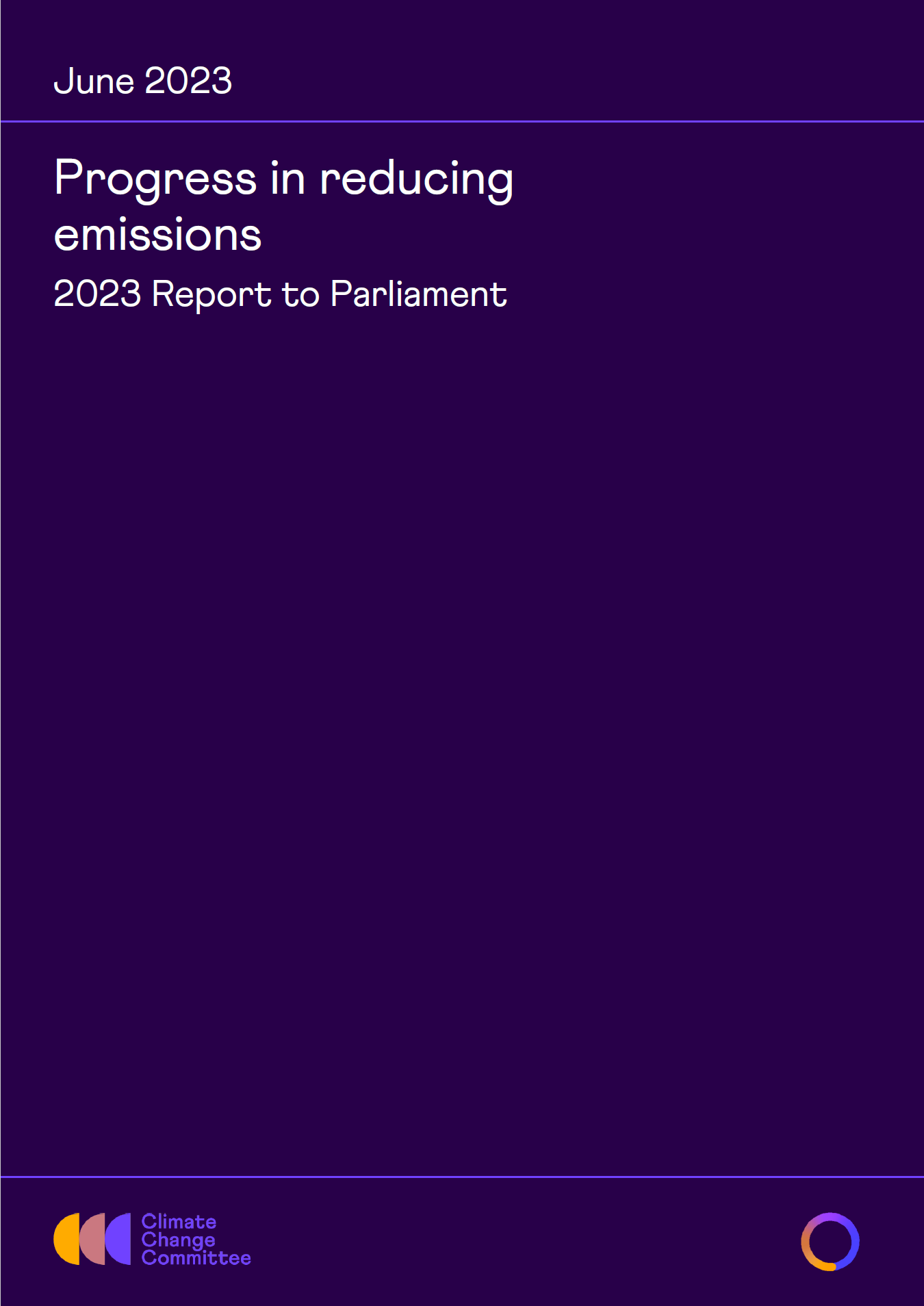
Simple schemes that favour efficient heat pumps and electrification over incumbent gas solutions are needed, especially to catalyse the early-stage adopters - utilising financial incentives such as Contract for Difference (CfD), Feed in Tariff (FiT) or Contracts for Benefit (CfB) could deliver high impact at scale if leveraged proactively.
Deployment and Delivery
As ever, the best way to accelerate deployment is to educate and engage with real projects. Starting the deployment learning curve will also drive down costs and provide the opportunity for innovation, learning and performance improvement.
Focusing on lower temperature applications first as the 'low-hanging fruit'. For geothermal sources, this means relatively shallow boreholes and minimal project risk. This allows the UK’s nascent geothermal project development and drilling industry to deliver commercial projects while enhancing performance, understanding and capability.
In balance with financial and policy measures for the delivery of Geothermal Heat Pump projects at a nationwide scale, there is an additional opportunity for innovation funding to support technology enhancement and consumers with larger-scale demands.
The mutualising of risk with material capital costs shared by the government would enable prospective large consumers of heating and cooling, such as - universities, schools, hospitals, retail, food & beverage - to deliver beach-head projects, leading to pathways for the accelerated adoption across multiple sectors.
Large and Industrial Scale Solutions
Higher temperature heat pumps of MW scale are already on the market, and development of the technology is ongoing at a rapid pace, again particularly in Europe, with OEMs in a race to capture market share. Further market insights here.
These MW industrial heat pumps currently typically use fossil fuel process heat that would have been wasted previously. More projects are coming online that use renewable resources - geothermal, solar and water - and are rapidly gaining traction to completely substitute fossil fuels in such instances.
Where deeper geothermal energy resources are qualified and de-risked, the additional temperature with depth adds to the energy balance of the resources. However, our research into the levelized cost, which remains the best way of assessing the impact of both capital and operating costs, highlights that drilling costs are a major component that needs to be minimised, at least in the short term.
The Future
The next decade of geothermal development in the UK requires the initial development of shallow resources to enhance project bankability, learning and experience before we progressively extend our scope of delivery - going deeper into our development and the benefits of geothermal heat.
About the Co-Author
Simon Todd
Simon has spent more than 30 years in energy, leading businesses from small startups to multi-billion-dollar operations, and is fully focused on the sustainable energy transition.
With extensive technical, commercial and leadership skills through governance, strategy, risk and financials, a PhD in Geology, and as an Adjunct Professor at University College Dublin, Simon is widely regarded as one of the UK's leading voices in Geothermal Energy.
You can follow Simon on LinkedIn here;

Causeway Energies here;
